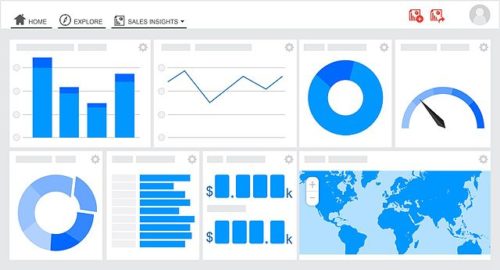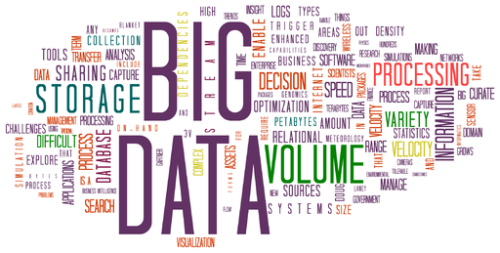
Many companies are using embedded BI to help advance their business. For those that don’t know this term, embedded BI stands for “embedded business intelligence”. When you incorporate embedded BI into apps or tools, it’s adding to the user experience.
 The capabilities of BI are powerful enough to create a competitive advantage for just about any firm. Although the advantages exist, there are some challenges however that ought to be covered, such as the challenges of wanting a BI platform that works and having a BI platform that really does actually work.
The capabilities of BI are powerful enough to create a competitive advantage for just about any firm. Although the advantages exist, there are some challenges however that ought to be covered, such as the challenges of wanting a BI platform that works and having a BI platform that really does actually work.
In today’s world, many businesses often find it difficult to set up a workable solution that would fulfill their analytical as well as reporting necessities. This article however, will cover some of the routes you can take to resolve the problem stated above, focusing specifically on what embedded bi has to offer.
It is true that the market has several BI options from which you can choose, but the existing problem is that you may not be able to get the balance between ease and performance when deciding on the product that is best suited for the needs of your company.
It is nearly impractical to conduct a strong BI analysis by using a simple predictable tool. Since the requirements for data reporting is constantly evolving, such simple tools are outdated and cannot meet the growing demands of the market.
In contrast to the above, there are companies that are not willing to depend on independent BI platforms formed by third-party vendors. Although these wide-ranging platforms can be influential and usually offer several features, end users can find that they are very difficult and not user-friendly, and they only provide a minimal level of flexibility.
This situation can become an obstacle for companies that need an ‘end product’ that is tweaked specifically to their needs. In addition, they can be very costly to create and consist of features, which are not relevant to your business. And what’s the point of paying for features that you have no intention of using or that don’t fit your business?
It is because of these reasons why many companies are now developing their own brand-named platforms and then incorporate third-party reporting elements into them.
 This type of individual elements is known as embedded BI. In contrast to the full-sized BI platforms, they are intended to carry out just a single task including data collection, data exporting, data processing, charting, mapping and others. Read more about embedded BI history here.
This type of individual elements is known as embedded BI. In contrast to the full-sized BI platforms, they are intended to carry out just a single task including data collection, data exporting, data processing, charting, mapping and others. Read more about embedded BI history here.
When a company decides to use embedded BI solutions, the company is maximizing on the ultimate benefits offered by both. Check out these benefits below:
- You get the benefits of using your own platform, built with business logic and reliable design language specific to your needs.
- You are free to select a set of extra BI elements, so you can widen the user-friendliness of your system.
Advantages of Embedded BI
 Why can’t a business just go ahead and develop its own BI platform and all the necessary components to go with it? Well, one important reason is that the high requirements needed for the software in combination with the high financial and timely expenditures of developing such a forceful application will outweigh the benefits considerably.
Why can’t a business just go ahead and develop its own BI platform and all the necessary components to go with it? Well, one important reason is that the high requirements needed for the software in combination with the high financial and timely expenditures of developing such a forceful application will outweigh the benefits considerably.
Let us take a closer look at some of the tangible benefits you can get from embedded BI in relation to in-house development.
- Performance. Since vendors are able to focus on developing a single application, they can invest several resources, and this allow their product to perform extremely well. Most companies find themselves in the situation where they are not able to achieve this because they do not have the resources or the technical expertise.
- Reliability. The companies that have developed embedded BI elements are in a better situation than those who cannot. This is because they can get their software tested in numerous real-world situations. Vendors with a large customer base will naturally get more feedback and bug reports in relation to the behavior of the application. With this information, the vendor can now issue a product that is both stable and reliable.
- Maintenance. The market is extremely competitive; therefore, vendors have to be constantly releasing an upgraded and updated version of their software. Without this constant effort, vendors will lose their viability. Upgrading and updating can mean adding new features, modifying the software to the current web-development styles, increasing the application’s compatibility with other data sources and technologies among others. Yet again, many companies do not have the necessary resources to sustain their in-house developed product sufficiently for any extended period of time.
Make a Sensible Evaluation
Based on these points that we’ve been discussing, it’s clear that embedded BI outshines in-house development. But to give a fair assessment, it is important to look at both sides. When choosing an embedded BI solution, you need to consider the following, which includes stability, technical compatibility, visual customization, and integration simplicity and security compliance. It will be time consuming to assess and compare your options, but it is critical and worth the effort. You can take some time and test the options out using the trial versions that many vendors offer to test their software and that’s important to do before you finally decide.
What we have covered here are a few of the performance basics of embedded BI. And we’ve also discussed some specific benefits from choosing third-party BI components rather than doing all the in-house development. Vendors of software are usually more knowledgeable, more experienced and they have the additional work force, which help them to produce better products for the market.
When you choose to use embedded BI tools, you are ensuring that your company can quickly build a strong reliable analytical and reporting platform.